DMM Systematic Error
advertisement
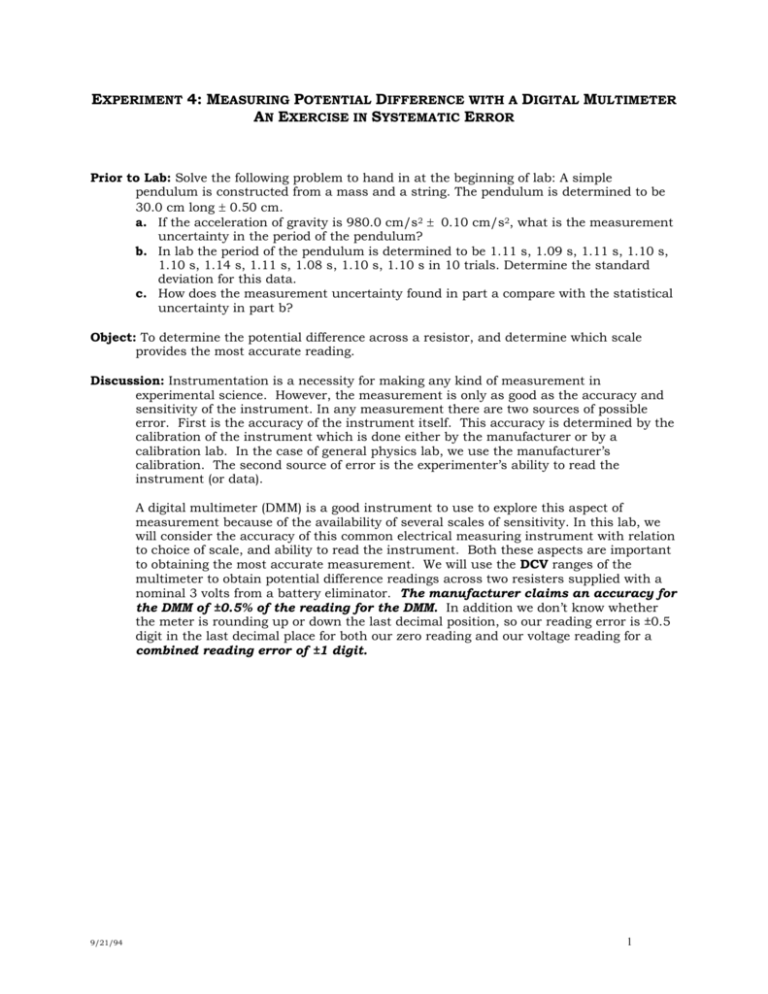
EXPERIMENT 4: MEASURING POTENTIAL DIFFERENCE WITH A DIGITAL MULTIMETER AN EXERCISE IN SYSTEMATIC ERROR Prior to Lab: Solve the following problem to hand in at the beginning of lab: A simple pendulum is constructed from a mass and a string. The pendulum is determined to be 30.0 cm long 0.50 cm. a. If the acceleration of gravity is 980.0 cm/s2 0.10 cm/s2, what is the measurement uncertainty in the period of the pendulum? b. In lab the period of the pendulum is determined to be 1.11 s, 1.09 s, 1.11 s, 1.10 s, 1.10 s, 1.14 s, 1.11 s, 1.08 s, 1.10 s, 1.10 s in 10 trials. Determine the standard deviation for this data. c. How does the measurement uncertainty found in part a compare with the statistical uncertainty in part b? Object: To determine the potential difference across a resistor, and determine which scale provides the most accurate reading. Discussion: Instrumentation is a necessity for making any kind of measurement in experimental science. However, the measurement is only as good as the accuracy and sensitivity of the instrument. In any measurement there are two sources of possible error. First is the accuracy of the instrument itself. This accuracy is determined by the calibration of the instrument which is done either by the manufacturer or by a calibration lab. In the case of general physics lab, we use the manufacturer’s calibration. The second source of error is the experimenter’s ability to read the instrument (or data). A digital multimeter (DMM) is a good instrument to use to explore this aspect of measurement because of the availability of several scales of sensitivity. In this lab, we will consider the accuracy of this common electrical measuring instrument with relation to choice of scale, and ability to read the instrument. Both these aspects are important to obtaining the most accurate measurement. We will use the DCV ranges of the multimeter to obtain potential difference readings across two resisters supplied with a nominal 3 volts from a battery eliminator. The manufacturer claims an accuracy for the DMM of ±0.5% of the reading for the DMM. In addition we don’t know whether the meter is rounding up or down the last decimal position, so our reading error is ±0.5 digit in the last decimal place for both our zero reading and our voltage reading for a combined reading error of ±1 digit. 9/21/94 1 Figure 1. A wiring diagram for the experimental apparatus. The 3 volts is generated by the battery eliminator with the switch on it set for 3 v. The zig-zag lines represent resistors, the rectangle marked DMM is the digital multimeter, and the other lines represent wires connecting the various elements of the apparatus. 3 volts DMM Figure 2. The apparatus and wiring arrangement for the experiment. The DMM is connected to the resistor board to measure the potential difference (voltage) 180 resistor. Figure 3. The same apparatus as Figure 1, however, the DMM is now properly connected to measure the potential difference (voltage) across the 1000 resistor. Experimental Procedure: 1. Attach the battery eliminator to the end terminals of the board containing the 1000 and 180 resistors. 2. After checking with your instructor, plug in the battery eliminator. 3. Measure the potential difference across each resistor on the 200 V, 20 V, and 2 V ranges as necessary to fill in the following table. Begin measurement with the least sensitive scale (the scale with the largest range). Do not use a scale that is 9/21/94 2 smaller than the measured potential difference determined on a less sensitive scale. 4. Determine the uncertainty of each measurement and record it. (Instrumental uncertainty plus reading uncertainty: V = 0.5% reading + 1 unit in the smallest displayed decimal position.) For example if your reading is 2.46 v, your uncertainty is (0.005 2.46 v + 0.01v = 0.02 v). Your value for the voltage is then 2.46 v ± 0.02 v. 5. Determine the fractional uncertainty of each measurement. Range Volts V1000 (volts) V1000 (volts) V1000 V1000 (%) V180 (volts) V180 (volts) V180 V180 (%) 200 volt 20 volt 2 volt Report: What do you conclude about the use of the DMM to measure voltage (potential difference)? What can you conclude about systematic error? What can you conclude about the voltages across the resistors? 9/21/94 3
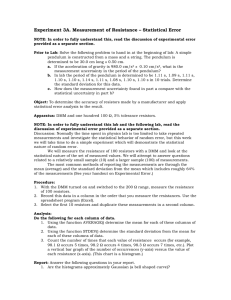
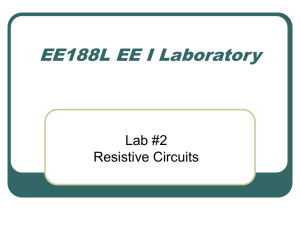

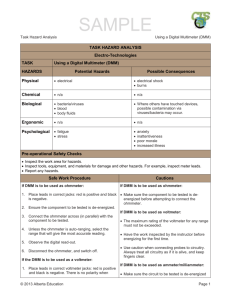
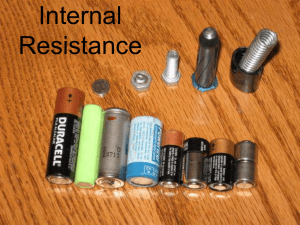
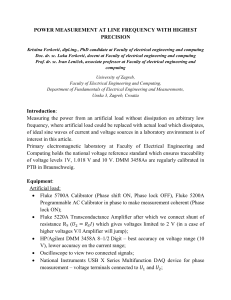
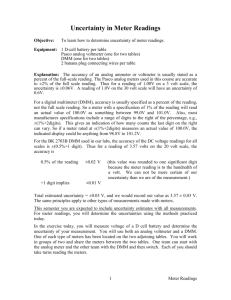
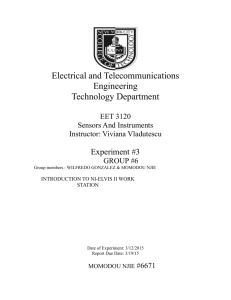

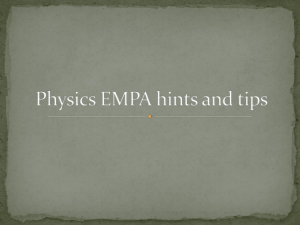
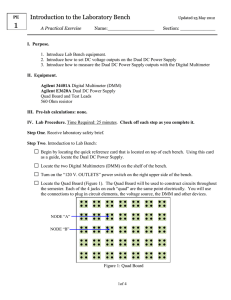
![milgram[1].](http://s2.studylib.net/store/data/005452941_1-ff2d7fd220b66c9ac44050e2aa493bc7-300x300.png)